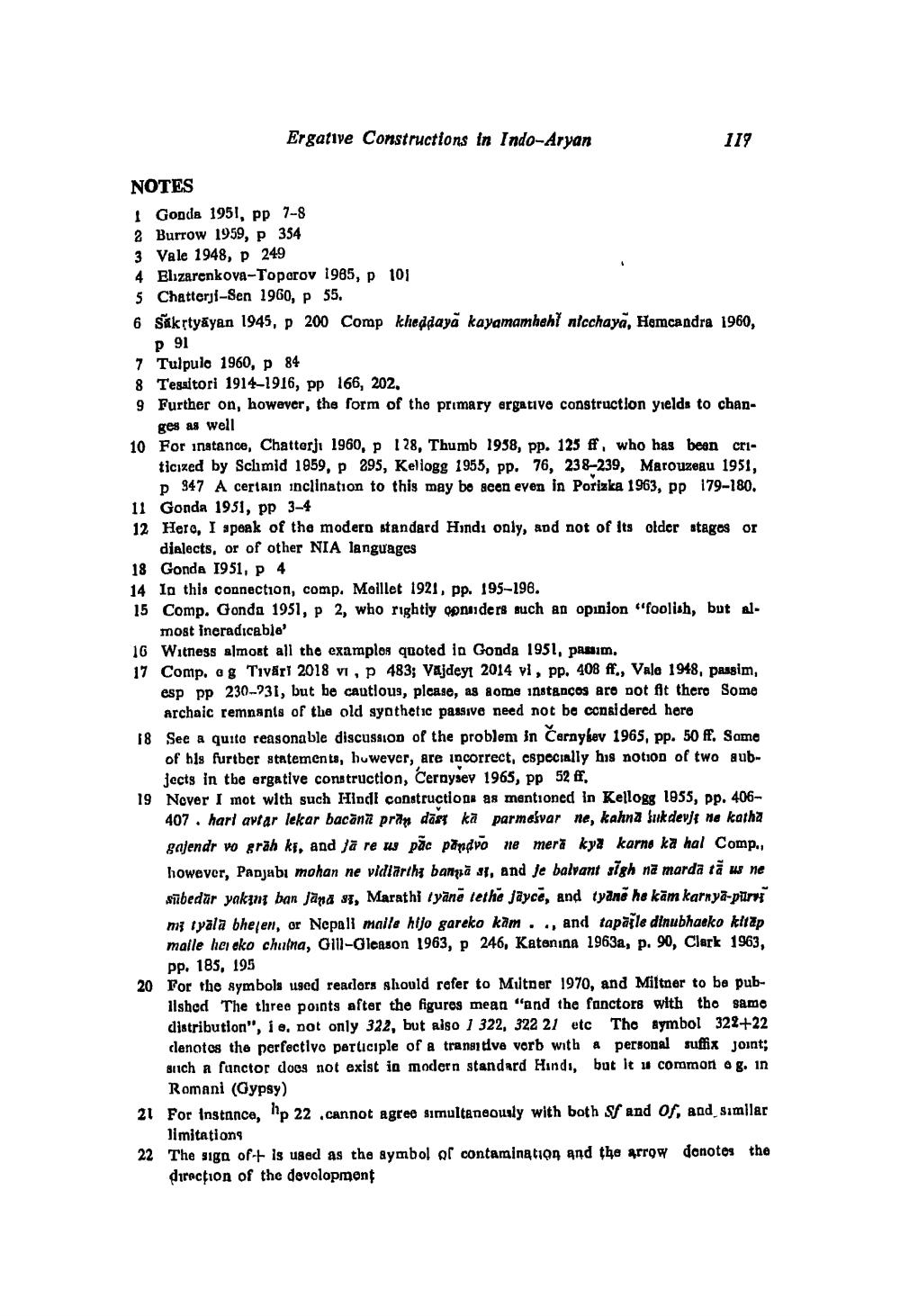________________
Ergative Constructions in Indo-Aryan
119
NOTES
1 Gonda 1951, pp 7-8
2 Burrow 1959, p 354
3 Vale 1948, p 249
4 Elizarenkova-Toperov 1985, p 101
5 Chatterji-Sen 1960, p 55.
6 Săkṛtyayan 1945, p 200 Comp kheddaya kayamamhehi nicchaya, Hemcandra 1960, p 91
7 Tulpule 1960, p 84
8 Tessitori 1914-1916, pp 166, 202.
9 Further on, however, the form of the primary ergative construction yields to changes as well
10 For instance, Chatterji 1960, p 128, Thumb 1958, pp. 125 ff, who has been criticized by Schmid 1959, p 295, Kellogg 1955, pp. 76, 238-239, Marouzeau 1951, p 347 A certain inclination to this may be seen even in Porizka 1963, pp 179-180. 11 Gonda 1951, pp 3-4
12 Here, I speak of the modern standard Hindi only, and not of its older stages or dialects, or of other NIA languages
18 Gonda 1951, p 4
14 In this connection, comp. Meillet 1921, pp. 195-196.
15 Comp. Gonda 1951, p 2, who rightly considers such an opinion "foolish, but almost ineradicable'
16 Witness almost all the examples quoted in Gonda 1951, passim.
17 Comp. og Tiväri 2018 vi, p 483; Vajdeyi 2014 vi, pp. 408 ff., Vale 1948, passim, esp pp 230-231, but be cautious, please, as some instances are not fit there Some archaic remnants of the old synthetic passive need not be considered here
18 See a quite reasonable discussion of the problem in Černybev 1965, pp. 50 ff. Some of his further statements, however, are incorrect, especially his notion of two aubjects in the ergative construction, Cernysev 1965, pp 52 ff,
19 Never I mot with such Hindi constructions as mentioned in Kellogg 1955, pp. 406407. hari avtar lekar bacana pran dast ka parmevar ne, kahna sukdevjt ne katha gajendr vo grah ki, and ja re us pac pandvo ne mera kya karne ka hal Comp., however, Panjabi mohan ne vidiärtha banna st, and Je balvant sigh na mardā tā us ne subedar yakın ban Jana st, Marathi tyane tethe jayce, and tyane he kam karnya-pūrvi ma tyala bhejen, or Nepali maile hijo gareko kām... and taparle dinubhaeko kitap malle hei eko chulna, Gill-Gleason 1963, p 246, Katenina 1963a, p. 90, Clark 1963, pp. 185, 195
20 For the symbols used readers should refer to Miltner 1970, and Miltner to be pubIlshed The three points after the figures mean "and the fanctors with the same distribution", ie, not only 322, but also 1 322, 322 21 etc The symbol 322+22 clenotes the perfective participle of a transitive verb with a personal suffix joint; such a functor does not exist in modern standard Hindi, but it is common a g. in
Romani (Gypsy)
21 For instance, hp 22 .cannot agree simultaneously with both Sf and of, and similar
limitations
22 The sign of-+ is used as the symbol of contamination and the arrow denotes the direction of the devolopment




